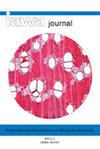追踪世界木材:物种和原产地鉴定的科学验证技术现状
IF 3.5
3区 农林科学
Q2 FORESTRY
引用次数: 4
摘要
非法采伐和非法木材贸易是一个全球性问题。解剖学、遗传学和化学技术通过验证木材的种类和地理来源来支持非法采伐立法。原则上,这些方法可用于确定木材种类和采伐来源,然而,对重要木材种类的具体测试的可用性尚不清楚。我们回顾了这些方法在全球前322个优先木材分类群中的应用现状。结果表明,木材解剖法鉴定的分类群具有100%的参考资料,遗传法鉴定的分类群具有86%的参考资料,DART TOFMS鉴定的分类群具有41%的参考资料,近红外光谱鉴定的分类群具有6%的参考资料。对于起源鉴定,24%的分类群存在数据,大多数研究采用遗传方法(23%)。目前还没有研究开发出针对全球重点木材分类群的法医测试。审查强调指出,目前确定树种的潜力大于确定地理来源的潜力,需要更多的研究集中于确定木材的地理来源。根据目前的汇率,大约需要。用27年时间为所有322个优先分类群生成地理数据。最后,我们确定了改善全球木材追踪工作的研究机会。我们的研究结果表明,需要更多的研究,而且要快,以便科学验证可以支持监管机构打击非法采伐。本文章由计算机程序翻译,如有差异,请以英文原文为准。
Tracing the world’s timber: the status of scientific verification technologies for species and origin identification
Illegal logging and illegal timber trade is a global problem. Anatomical, genetic, and chemical techniques support illegal logging legislation by verifying the species and geographic origin of timber. In principle, these methods can be used to identify timber species and the origin of harvest, however, the availability of specific tests for important timber species is unclear. We review the status of these methods for the top 322 global priority timber taxa. Our results show that for species identification, reference data exist for 100% of taxa using wood anatomy, 86% using genetics, 41% for using DART TOFMS, and 6% using NIRS. For origin identification, data exist for 24% of taxa, with most studies applying genetic approaches (23%). No studies have developed forensic-ready tests for the global priority timber taxa. The review highlights that the current potential for identifying species is greater than for geographic origin and more research focused on determining the geographical origin of timber is required. Based on the current rate, it will take approx. 27 years to generate geographic data for all 322 priority taxa. Finally, we identify research opportunities to improve global timber tracing efforts. Our findings indicate more research is needed, and quickly so that scientific verification can support regulators to combat illegal logging.
求助全文
通过发布文献求助,成功后即可免费获取论文全文。
去求助
来源期刊

IAWA Journal
农林科学-林学
CiteScore
3.40
自引率
15.80%
发文量
26
审稿时长
>36 weeks
期刊介绍:
The IAWA Journal is the only international periodical fully devoted to structure, function, identification and utilisation of wood and bark in trees, shrubs, lianas, palms, bamboo and herbs. Many papers are of a multidisciplinary nature, linking
 求助内容:
求助内容: 应助结果提醒方式:
应助结果提醒方式:


